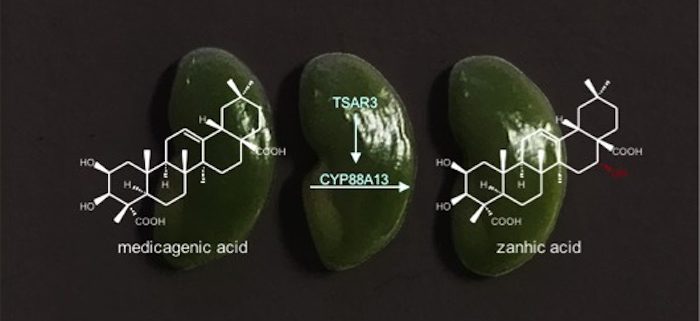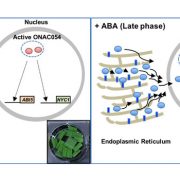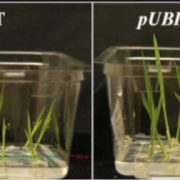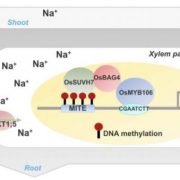Seed-Specific Saponin Biosynthesis in Medicago
Ribeiro, Lacchini et al. discover a seed-specific transcription factor that helps determine the composition of the defense compounds saponins in developing Medicago truncatula seeds. Plant Cell https://doi.org/10.1105/tpc.19.00609
By Elia Lacchini, Alain Goossens, and Jacob Pollier
VIB-UGent Center for Plant Systems Biology, Ghent University, 9052 Ghent, Belgium.
Background: Plants are constantly confronted by a variety of threats, such as herbivores and pathogens, and as sessile organisms they cannot flee from their predators or search for more favorable growth conditions. As a defense mechanism, plants produce a vast arsenal of chemicals that may be toxic to their attackers or deter them from eating the plant. One class of such defense compounds are the saponins. These amphipathic glycosides act as deterrents against herbivores due to their bitter, astringent flavor and toxicity. Alfalfa (Medicago sativa) is a major hay crop with a high feeding value, but it synthesizes a complex saponin mixture with a certain degree of toxicity towards monogastric animals. We previously characterized two transcription factors, TSAR1 and TSAR2, which regulate saponin biosynthesis in response to stress in M. truncatula, a model plant and close relative of alfalfa.
Question: We wanted to gain further insight in how saponins are biosynthesized in M. truncatula and the genetic control of saponin biosynthesis that leads to the distinct saponin mixtures that accumulate in different plant tissues.
Findings: We identified TSAR3, a seed-specific transcription factor that determines the saponin composition in developing M. truncatula seeds by controlling the expression of saponin biosynthetic genes. Co-expression analysis with TSAR3 led to the identification of CYP88A13, a cytochrome P450 that catalyzes the C-16α hydroxylation of medicagenic acid towards zanhic acid, a specific reaction in the biosynthesis of saponin backbones that only occurs in the aerial parts of the plant. In addition, we identified two glucosyltransferases, UGT73F18 and UGT73F19, which transfer a glucose moiety to the C-3 position of the saponin backbones. The genes encoding these saponin biosynthetic enzymes are present in clusters of duplicated genes in the M. truncatula genome, which may be a driving force of metabolic evolution in plants.
Next steps: Future research is needed to find out how the TSAR transcription factors target the specific set of biosynthetic genes that determine the saponin mixture in a certain tissue or environmental condition.
Ribeiro, Lacchini et al. (2020). A Seed-Specific Regulator of Triterpene Saponin Biosynthesis in Medicago truncatula. Plant Cell DOI: https://doi.org/10.1105/tpc.19.00609










